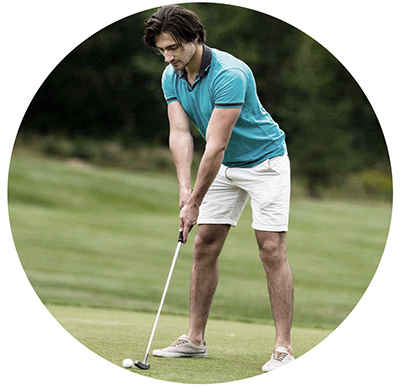Why do golfers take their glove off to putt?
In the realm of golf, a realm steeped in tradition and defined by meticulous attention to detail, various rituals and customs shape the play of the game. Among these, the seemingly simple act of removing one’s glove before putting stands out as a practice deeply ingrained in the sport’s fabric.
While it may appear inconsequential to the uninitiated, delving deeper reveals a myriad of reasons behind this age-old tradition, each contributing to the golfer’s quest for mastery on the greens.

Enhanced Tactile Sensitivity
Putting, the delicate art of guiding the ball into the hole with precision, demands acute tactile sensitivity. Golfers rely heavily on the feedback from their hands to gauge the speed and direction of their putts. By shedding their gloves, players eliminate barriers between their fingers and the putter grip, allowing them to keenly feel the subtle undulations of the green.
This heightened sensitivity fosters a deeper connection with the putting surface, empowering golfers to execute their strokes with greater finesse.
Optimized Grip Control
While modern golf gloves boast advanced materials engineered to enhance grip, some players find that direct contact with the putter grip offers unparalleled control over their strokes. By removing the glove, golfers eliminate any potential interference between the texture of the glove material and that of the grip.
This direct tactile connection instills confidence in the golfer’s grip, enabling them to execute smooth, controlled putting motions with precision.
Amplified Feel and Delicacy
Putting is often likened to a “game within the game,” where the slightest variations in touch can spell the difference between success and failure. Many golfers believe that by forgoing their gloves, they can establish a more intimate connection with the club, heightening their sense of touch and promoting a delicate putting stroke.
This heightened feel allows players to navigate the greens with finesse, delicately guiding the ball towards its target with precision and control.
Anchored in Tradition and Ritual
At the heart of golf lies a rich tapestry of tradition and etiquette, passed down through generations of players. The practice of removing one’s glove before putting embodies this spirit of reverence for the customs of the game.
Dating back to the early days of golf, when gloves were rudimentary and offered little flexibility, this tradition has persisted through the ages, becoming an integral part of golf’s cultural heritage.
Historical Insights
The roots of glove removal while putting delve deep into golf’s historical narrative. In eras past, when gloves were crafted from thick leather and provided minimal tactile feedback, players instinctively shed them before putting.
This practice, born out of necessity, laid the groundwork for the tradition that endures to this day.
Influence of the Pros
Professional golfers, revered as paragons of skill and technique, wield considerable influence over the habits and practices embraced by amateurs. Many elite players, in homage to tradition or for the sake of enhanced performance, remove their gloves before putting, setting a precedent that reverberates throughout the golfing community.
Personal Choice and Adaptation
Despite the prevalence of glove removal among golfers, the decision ultimately rests on personal preference. Some players may opt to retain their gloves, citing comfort or habit, while others swear by the benefits of bare-handed putting. In the tapestry of golfing rituals, individual choice adds yet another layer of diversity to the sport’s rich tapestry.
The act of removing one’s glove before putting transcends mere convention; it symbolizes the reverence for tradition and the relentless pursuit of mastery that define the essence of golf.
Whether motivated by a quest for heightened sensitivity, a desire for enhanced grip control, or simply a nod to the customs of the game, golfers worldwide continue to embrace this time-honored practice as they navigate the greens in pursuit of perfection.












